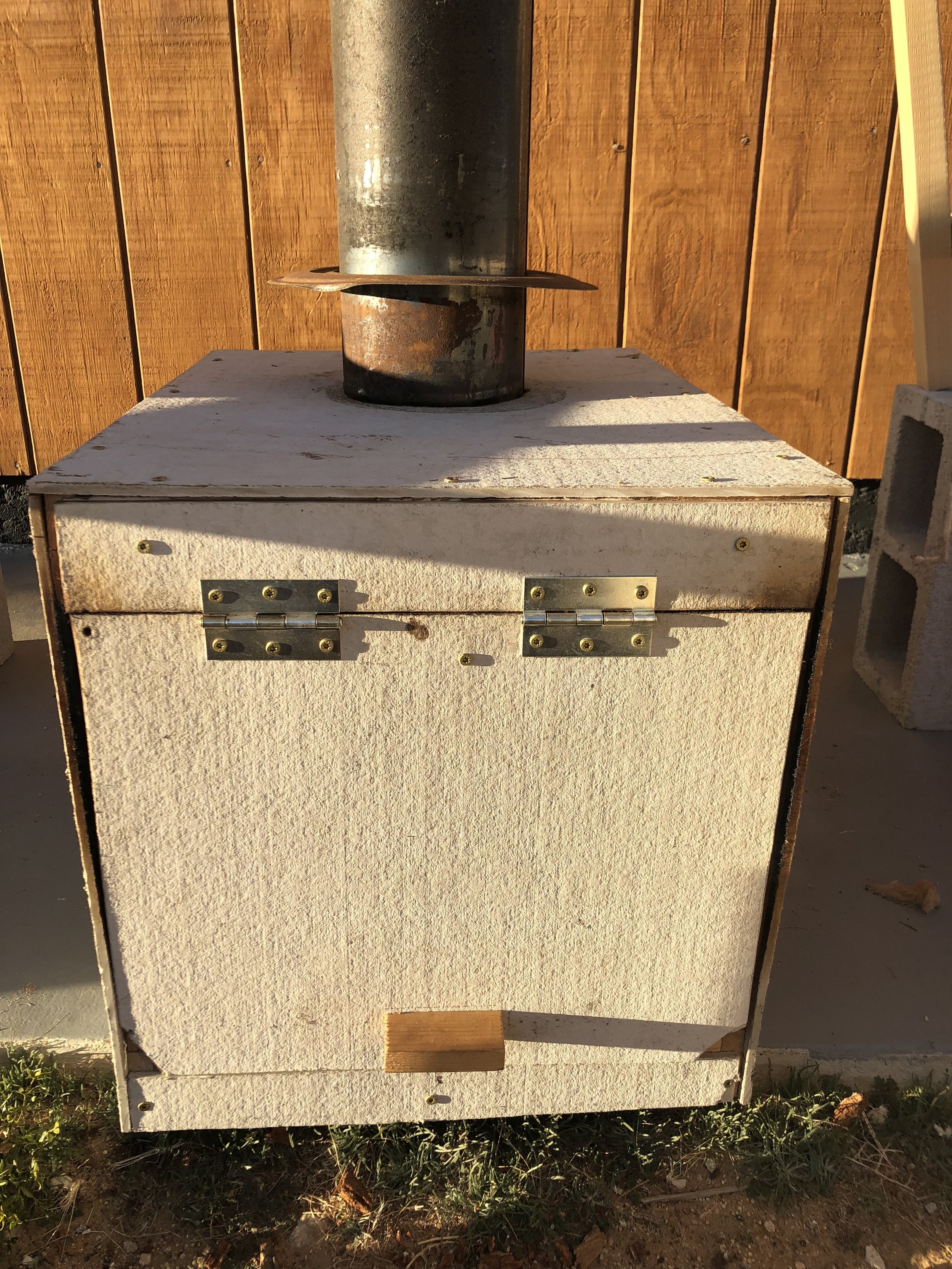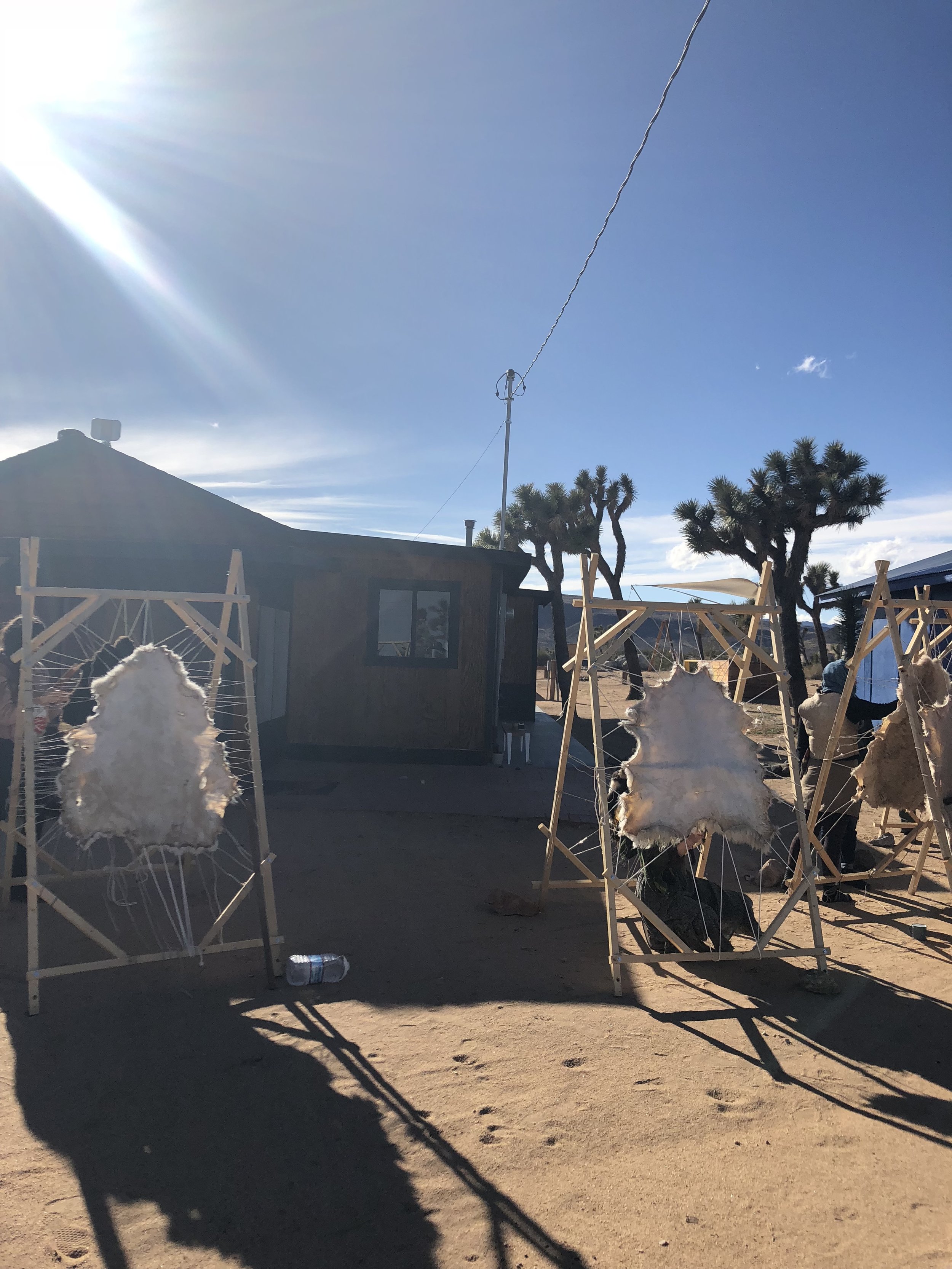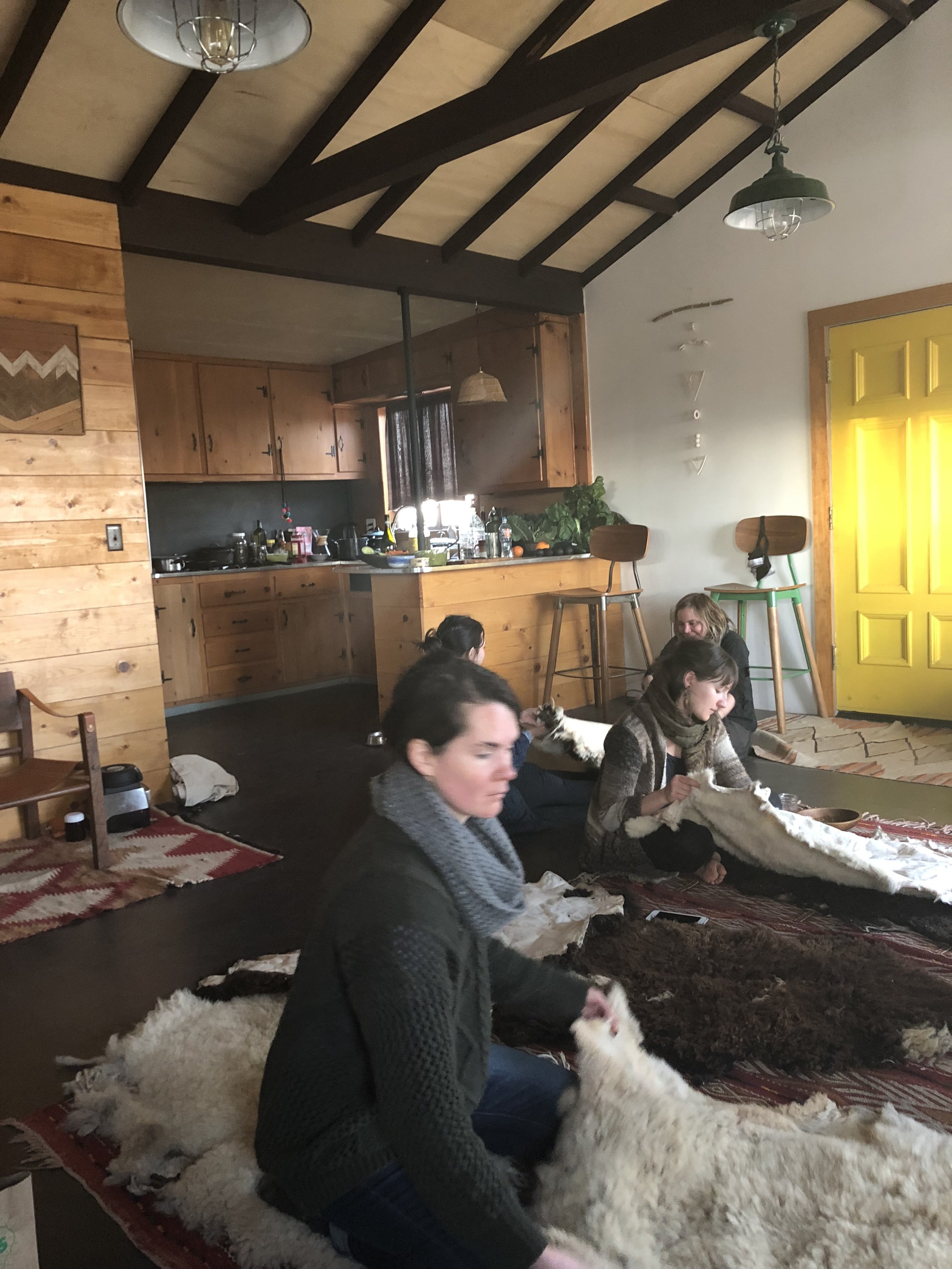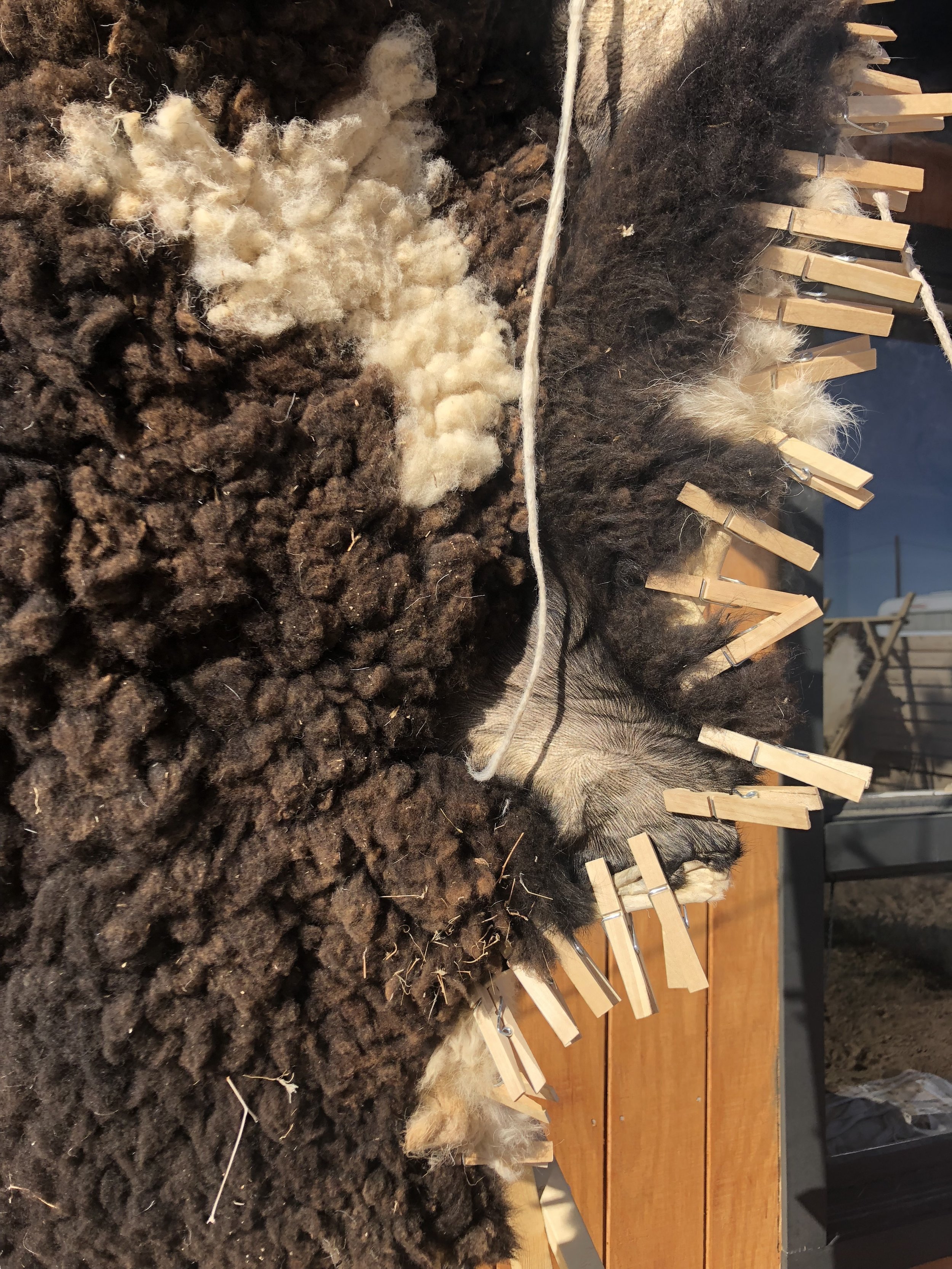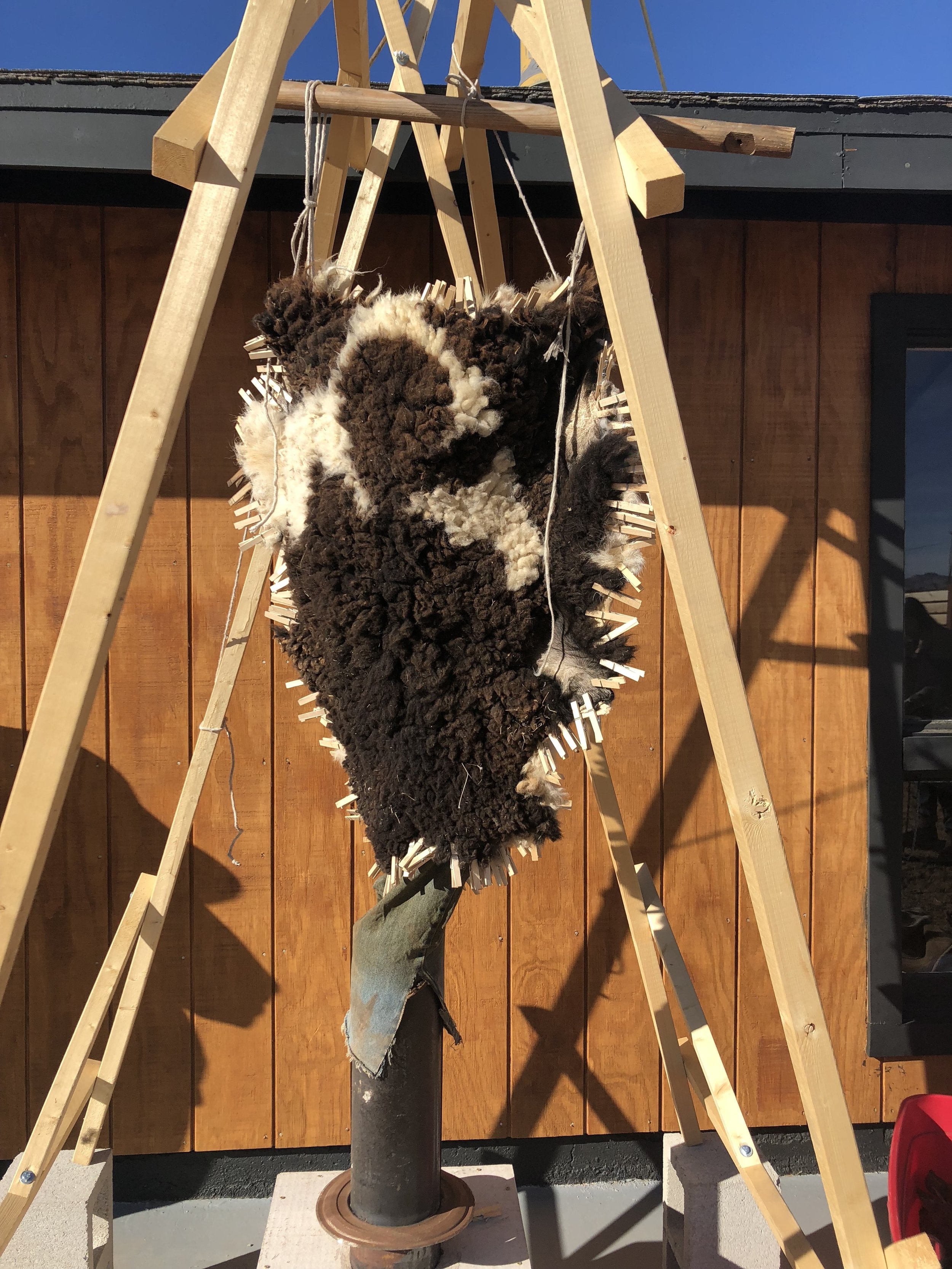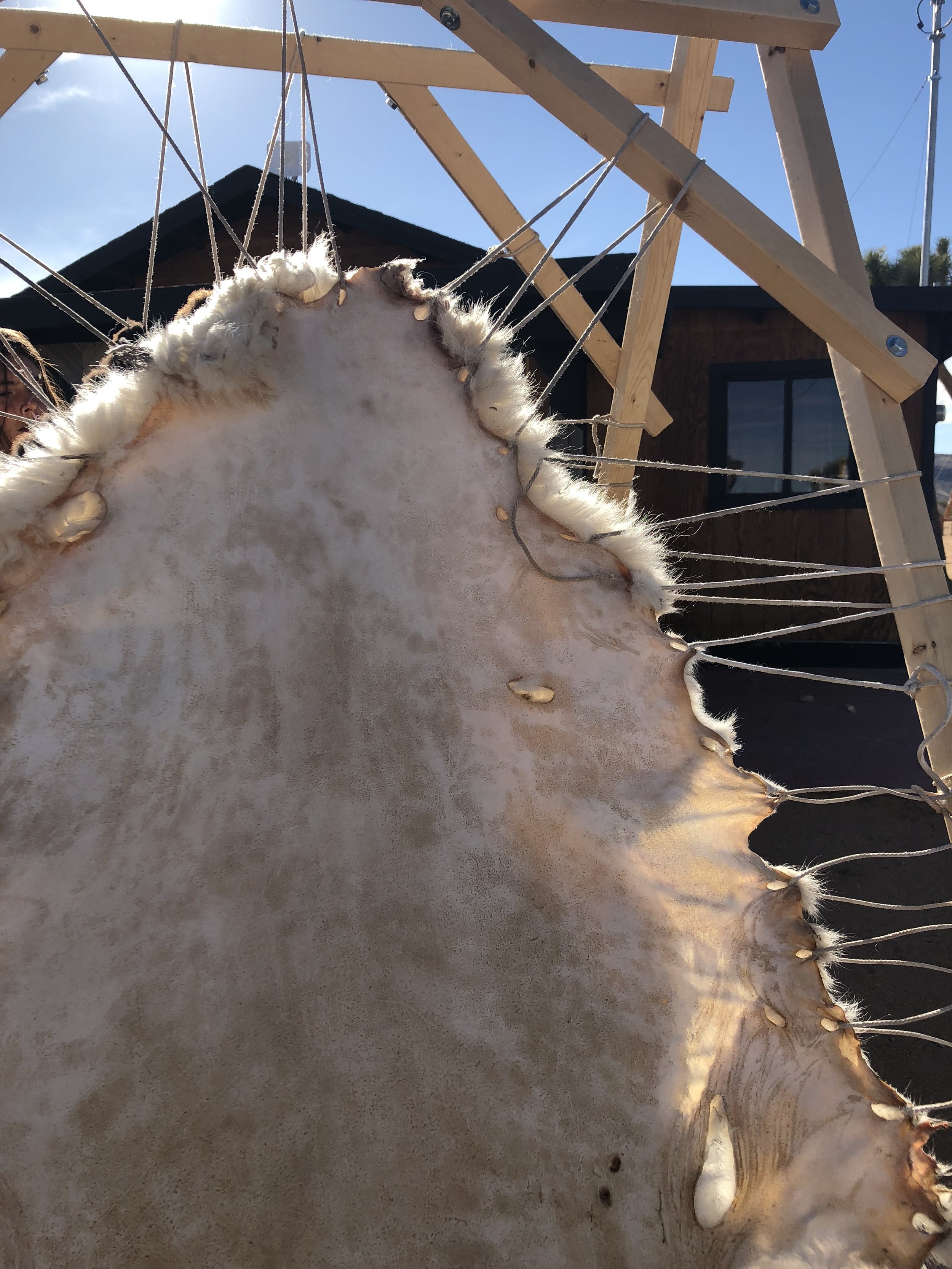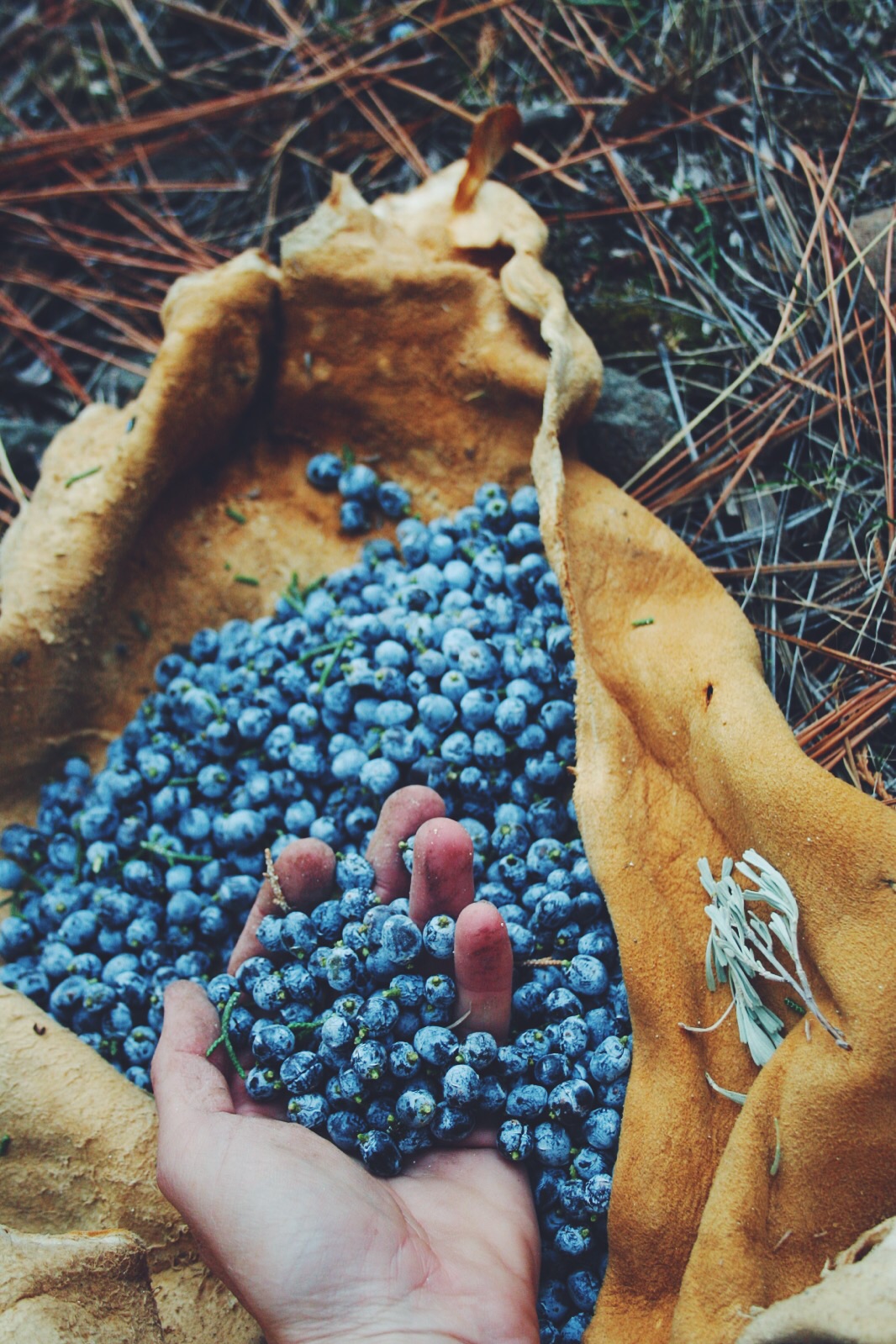It's a little late for me to be posting this photo diary, as these shots were taken back in late winter. Nonetheless, here they are in their curious beauty. I have a roll of film from the trip I took in Joshua Tree too, and I have yet to develop it.
Joshua Tree is a small town outside of the National Park with the same name in southern California, located in the Mojave desert- but bordering the Sonoran desert. It is in a high desert region, with pretty remote areas to the north and east, the Mexico border near the South, and Los Angeles a few hours to the West.
I arrived at a time where the plants were JUST waking up to flower. The lack of rain this past winter in southern California has things delayed or not flowering at all, too. Desert Dodder dried up on Desert Willow (not a true Willow), Yerba Mansa leaves just peeping out, Desert Mallow just starting to bloom.
I visited Joshua Tree for a couple of reasons. I was headed to take a sheepskin tanning class with a friend, Maya Beth. Though I have tanned sheepskins before, so honestly I was needing time with other skills folks, women, and doing something with my hands, with others. Its a part of my soul that hasn't felt as fulfilled these past few years as the road brings you to concentrated times of this work, when my life used to just be working on projects living in community all the time. I've home based some out of Nevada County, CA, but I haven't found many folks to do this kind of work with together. I find myself driving hours and hours chasing that precious time and usually it is pretty worth it.
Maya hosted her workshop at Leslie's house, and it was a pretty nice spot to have a hide tanning class. I've never worked hides in a scenario where there's a hot tub in the mix, though I guess the wood-fired one at Dancing Springs we'd take all day to heat up counts.
We encountered insanely windy days where the sand of the dry desert splashed our faces, and depleted our sense of self. Not to mention, hide tanning is hard work. It got us all a little frazzled, but our hides still turned out amazing. At night hanging out in the house around a fire and with others who have been working hard all day processing animal skins is probably one of my favorite things to do. Can't I just do this every day?
After the class, I went to stay with my friend Peri Lee, another reason I came to Joshua Tree. Peri Lee is an amazing desert botanist and just naturalist all around. It was such a treat to walk the desert with her and also get to ask 'will you take me to that Ceanothus species that grows down here?' and have my request not received with a weird eye but an excited 'YES, Let's go.'
Jojoba
A Scutelleria species, according to Peri Lee.
Peri Lee, taking me to the Ceanothus.
Ceanothus greggii (Rhamnaceae)
Joshua Tree seems to attract a lot of artists, healers, herbalists, crafts folk and overall oddballs. I loved it in a lot of ways. I was fighting a UTI the whole time, and trying to ground out from the epic hide tanning wind storm, so sometimes I felt a little hyper focused on self care. Through Peri, I ended up meeting a lot of cool folks doing something creative or another and one of the biggest things that struck me about the art in general around Joshua Tree is the apparently theme I saw. There's something about the desert, and a desert like this one, with the awe-inspiring Joshua Trees, that creates a certain texture, color scheme, impression on folks. Any desert is an inspirational landscape, but Joshua Tree in particular has its own flavor.
It's proximity to L.A. probably has something to do with that, though many of the locals claim that the less desirable aspects of L.A. culture are starting to bleed into the small town feel, especially the rapid increase tourism in the past few years. This influx of tourism has lessened the availability of affordable housing. Affordable housing means artists and healers have more time to do their important work without having to get side jobs to pay the bills.
This proximity to L.A., and the increase in popularity of herbalism, also has some in the area questioning the ethics of wildcrafting many of the plants that grow in the region.
Peri Lee was one of the main folks who encouraged me to launch the Ground Shots audio project. After many hours discussing the ethics of wildcrafting from botany and ethnobotany eyes, as well eyes of punks who care about disassembling the colonialistic aspects of working with plants, we thought: if only we had recorded this and shared these different perspectives with others.
Maybe we will? ;)
I'd like to go back again and spend more time among the Chaparral flats, the Yerba Mansa, Desert Willow and Cottonwood filled riparian regions, the maze-like rock formations.
The original inhabitants of the region are the Cahuilla, Serrano, Southern Paiute/Chemehuevi who are still very much there.
I highly recommend paying the fee and visiting Tahquitz Canyon near Palm Springs, California, in the low desert near Joshua Tree. It is a trail and visitors center run by the Agua Caliente Band of Cahuilla Indians on their reservation.
Peri Lee of Sun Ritual, Ceanothus, other desert scenes
A few plants above: Creosote Bush, Agave, Desert Mallow, Desert Buckwheat, Scorpian Flower, and more.
WIld Tobacco
Lantana- in the Cactarium.
Opuntia spp.











































































